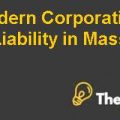
Dilution, Valuation and Ratios Case Solution
Answer 1: Dilution:
The goal of every business is to maximize the shareholders’ wealth. It can be fulfilled with: either by capital gain (to reinvest for growth purpose) or by giving dividend. For financing purpose, the company should issue the stocks instead of increasing debt in its capital structure. The total of 10,000 shares was issued and the company was further required to issue 2000 stocks.
The purpose is to identify the decrease in the shareholders’ value by increasing the number of shares outstanding as it would result in decrease in earnings per share of $3.87as compare to $4 per share. Along with this, the book value per share (Calculated as Book net worth / shares outstanding) would decline to $48.33 from $50 because book net worth increases from $500,000 to $580,000 with increase in shares outstanding of 12,000 as denominator increases which is why the Net book value would decrease to $48.33 due to inverse relationship. The market price of share would also decline because of dilution increase and proportion of earning will be divided among all shareholders.
It is proved from the calculation that the sales of stock would decrease the value per share in market, earning per share to individual shareholders as well as the book value per share that ultimately would lead to a decrease shareholders’ wealth. Issuing of stock might be a bad idea but if the company has already issued too much debt, then it should think of issuing stock for financing purpose. Otherwise debt is a better idea for financing because of tax saving purpose.
Answer 2: Company Valuation:
The company’s value per share is calculated by earning before tax in all five projected years and adding depreciation and deducting CAPEX and working capital changes that resulted in free cash flow after tax in all five years along with terminal value as shown in calculation. With the help of above calculation, the net present value is resulted in $19,988.97 and value of debt is $ 5000 and a share outstanding is 865,000 that resulted value per share of $17.33.
Another way is to calculate the company’s value per share whichis calculated as discounting of earnings from year1 through year 5 by using WACC of 12% and growth of 4% that is used to apply after 5th year, which results in $35.05 of value per share at the end of five year.
Awensr 3: Leverage ratio:
Debt ratio is calculated as dividing total liabilities by total assets, both can be easily analyzed in Balance sheet and ratio, which shows total liabilities as a percentage of total assets. Moreover, it shows the solvency of company, and preferred as much as low percentage..................
This is just a sample partial case solution. Please place the order on the website to order your own originally done case solution.











